From Episode One – North America: Snow geese flying through Monument Valley, USA. Credit: © John Downer Productions
What would it be like to see the world from a bird’s perspective? To experience riding on the backs of bald eagles and snow geese or flying alongside a flock of brown pelicans as they scan and dive for fish in the ocean below. State-of-the-art technology and sophisticated camera techniques have now made it possible to do just that and more as EARTHFLIGHT, A Nature SpecialPresentation takes viewers on a breathtaking aerial adventure over six continents.
Witness some of the world’s greatest wildlife spectacles, struggles, migrations, and stunning landscapes from a bird’s-eye view when EARTHFLIGHT, A Nature Special Presentation. Each episode is available for online streaming at pbs.org/nature.
It took EARTHFLIGHT series producer John Downer and his team four years to film more than 100 bird species in 40 different countries. Whether retracing the North American flight paths taken by thousands of migrating wild snow geese traveling to their Arctic breeding grounds or witnessing, for the first time, the aerobatics of devil rays as they somersault and splash back into the sea, the goal was to show the world on the wings of birds.
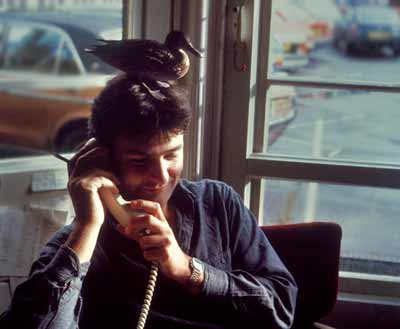
EARTHFLIGHT filmmaker John Downer (see his Q&A for the backstory on this image) © John Downer Productions
Q&A with John Downer, John Downer Productions:
How do you mount a camera to a bird?
The camera-carrying birds wore specially-designed harnesses. They were created to be as comfortable as possible and not interfere with the birds in flight. All the birds were trained to become used to flying with the harness before the camera was added.
Can you explain what using “imprinted birds” means?
Imprinting is a technique where birds are exposed to a foster parent as soon as they hatch. They then react to this surrogate parent as if it were their mother, following “her” wherever she goes. We imprinted our birds on selected crew members so they’d fly alongside their human “mother” as soon as they were able to fly, even if this person was in a moving boat or vehicle or even up in a microlight.
What do you hope EARTHFLIGHT viewers will take away from the series?
I hope that people will discover that birds are clever and adaptable creatures often with a complex social life not so different from our own. They have an unrivalled knowledge of the life of the planet and through their remarkable journeys they bring countries and continents together in ways that are constantly surprising.
CLICK HERE to read more questions and answers with John.
To capture a view of the greatest gathering of wild flamingos seen in 20 years, the team employed a variety of spycams. Remote cameras were buried at a favorite drinking spot by Kenya’s Lake Bogoria, while another camera was disguised as a mini-flock of floating flamingos. To film scenes from above, a radio-controlled drone was used with great success to silently infiltrate masses of the skittish pink flamingos.
To get remarkably close flying shots of wild vultures in South Africa, cameramen on paragliders piloted by biologists utilized the same updrafts and thermals as the birds they were there to film. To get even closer to the vultures, a full-scale replica of the bird was launched with a radio-controlled pan and tilt camera on board which was able to transmit pictures as it flew among the real birds.
Tiny HD cameras on the backs of trained birds captured amazing viewpoints that have never been seen before, such as that of a snow goose flying over New York Harbor toward the Statue of Liberty or a bald eagle soaring through the Grand Canyon in search of food.
The work involved in producing some images involved what is known as “imprinting,” which involves raising a flock of birds from birth. The process causes the birds to form a strong familial bond with the individual they regard as their mother. Avid French bird-enthusiast Christian Moullec raised a flock of geese, caring for them every day and training them to accept his piloted microlight as part of the family, so that when they all took to the skies, he was able to film close-up shots of the imprinted flock flying in tight formation as the geese retraced the great journeys of wild birds over Edinburgh and London for EARTHFLIGHT.
Episode one – North America: Snow geese, pelicans, and bald eagles fly over the Great Plains, the Grand Canyon, Alaska, New York City and the Golden Gate Bridge as they encounter and engage with bears, dolphins, bison, and spawning fish.
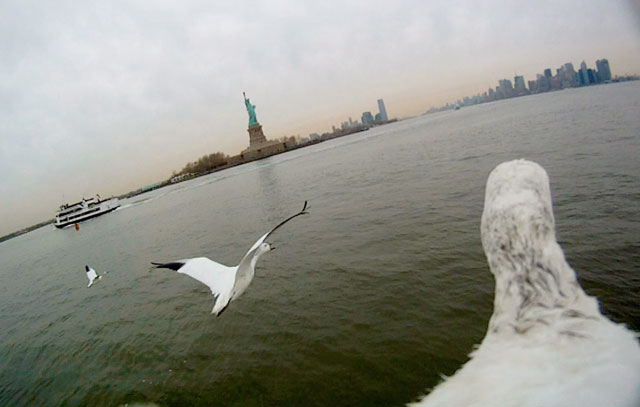
Episode One – North America. Camera onboard shot of snow geese flying over Hudson River, New York, background Statue of Liberty, USA.
Credit: © John Downer Productions
Episode two – Africa: Fly and arrow-dive with cape gannets among sharks, dolphins, whales and the great sardine run. Soar with fish eagles, flamingos, kelp gulls and vultures to see the most animal-packed continent with fresh eyes.
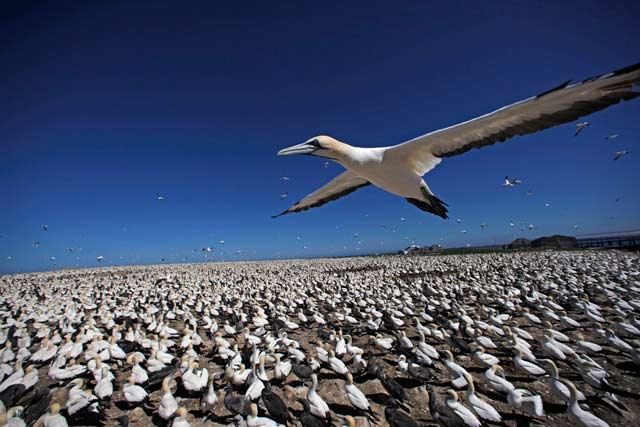
Episode Two – Africa. Cape gannet flying over gannet colony, Bird Island, South Africa. Credit: © John Downer Productions
Episode three – Europe: Cranes and geese rise over Venice, Dover, Edinburgh and the monkey-guarded Rock of Gibraltar. In Rome, the Loire Valley, Holland and Hungary, birds gather by the millions to breed and two by two to raise their families.
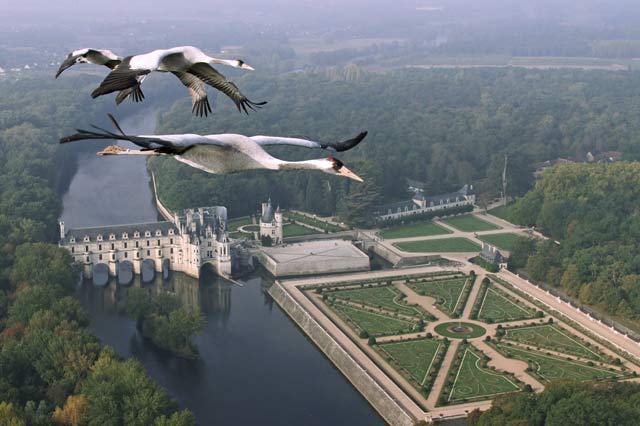
Episode Three – Europe. Common Cranes flying over Château Chenonceau, France.
Credit: © John Downer Productions
Episode four – South America: Condors and scarlet macaws take us to the Andes and the Amazon. Giant petrels in Patagonia shadow killer whales. Hummingbirds feed at Iguazu Falls, vultures ride the thermals over Rio de Janeiro, and black vultures target turtle eggs in Costa Rica.
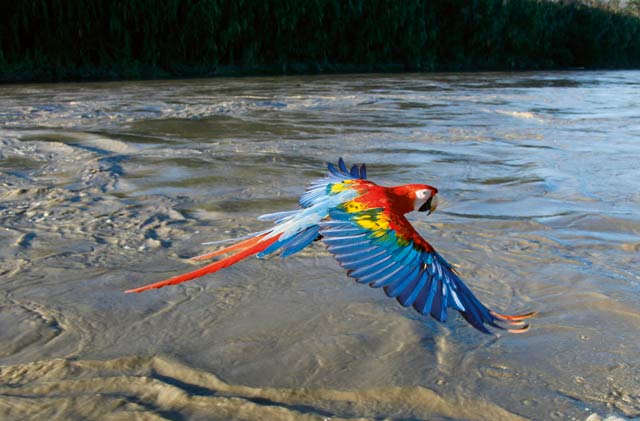
Episode Four – South America. Scarlet Macaw in flight, Manu River, Peru.
Credit: © John Downer Productions
Episode five – Asia and Australia: Japanese cranes dance in the snow, swallows and swifts visit the Great Wall and the Forbidden City, lorikeets, cockatoos and budgies form giant flocks in Australia, pigeons guide us through India, and geese fly miles above the Himalayas.
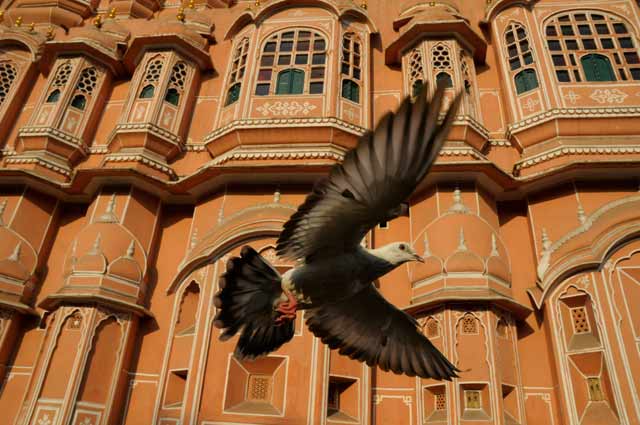
Episode Five – Asia & Australia. Rock Dove, Palace of the Winds, Jaipur, India. Credit: © John Downer Productions
Episode six – Flying High: A behind-the-scenes look at how EARTHFLIGHT was made, including the extraordinary relationships between people and birds. Microlights, paragliders, drones, and camera-carrying birds and much more helped along the way.
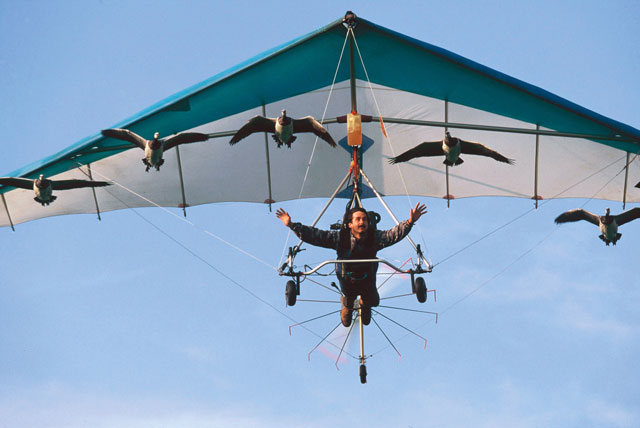
Episode Six – Flying High. Christian Moullec flying a microlight with his geese. Credit: © Christian Moullec
Each episode is available for online streaming at pbs.org/nature.
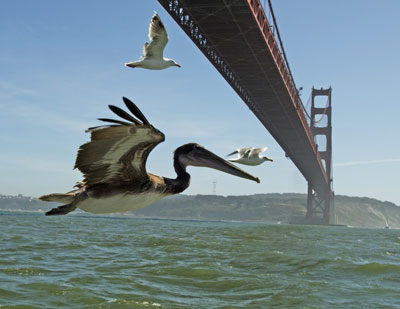
From Episode One – North America. Brown pelicans flying under Golden Gate Bridge, San Francisco, USA. Credit: © John Downer Productions
Photo Credit: Courtesy of John Downer Productions

Leave a Reply